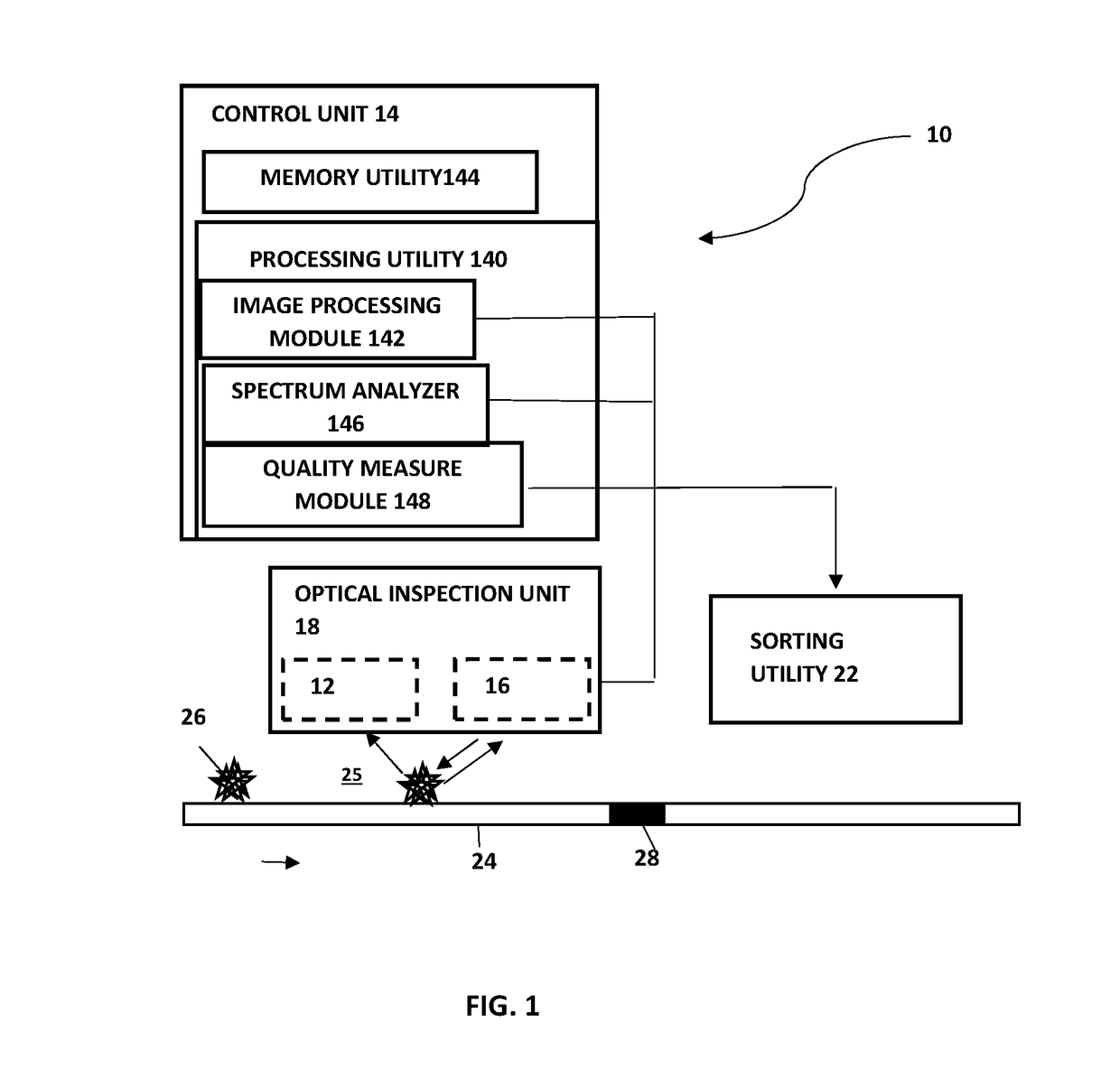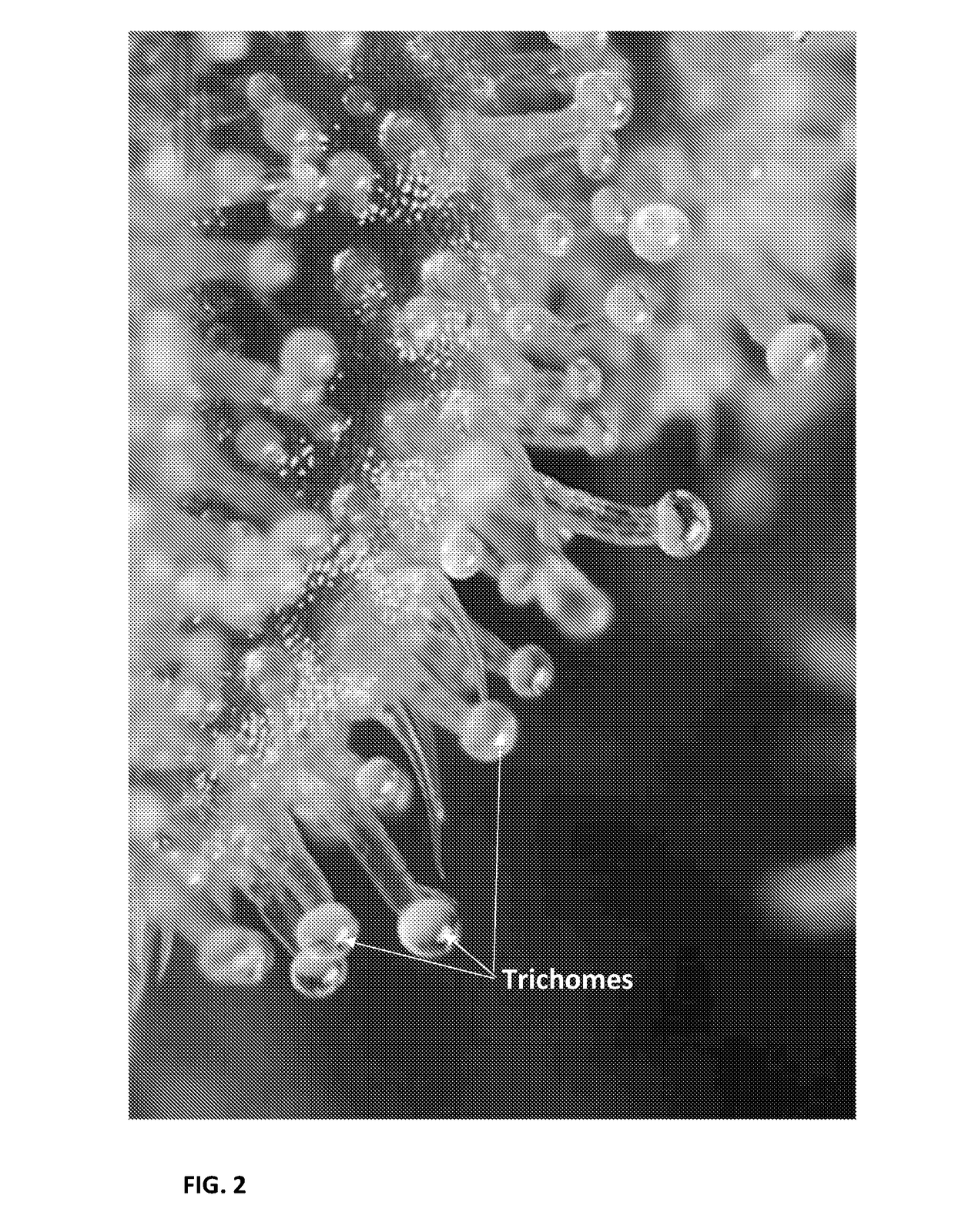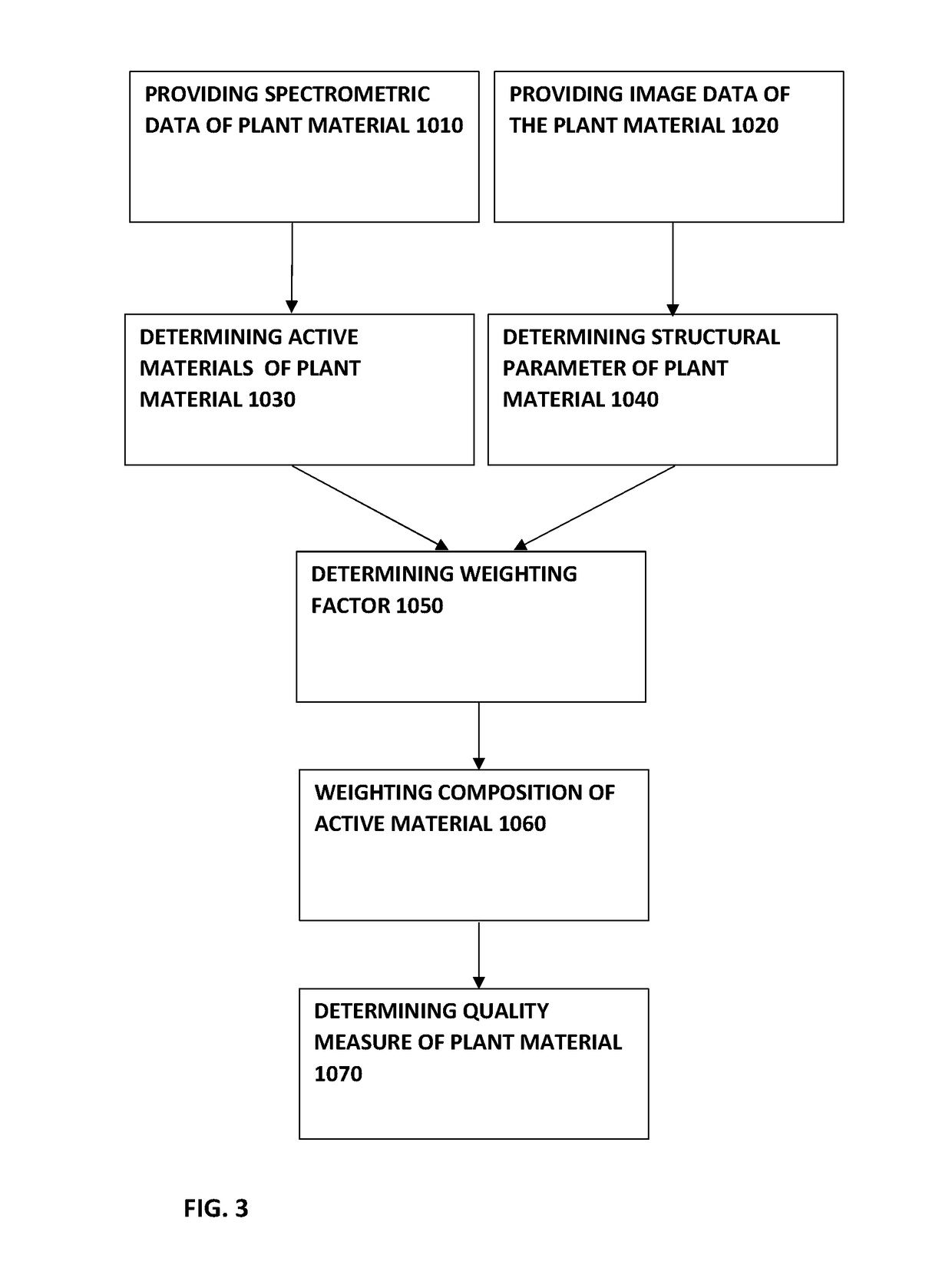System and method for qualifying plant material
a plant material and plant technology, applied in the field of plant material qualification systems, can solve the problems of less effective detection, decarboxylation of acidic cannabinoids, and unnecessary psychoactive thc for some patients
- Summary
- Abstract
- Description
- Claims
- Application Information
AI Technical Summary
Benefits of technology
Problems solved by technology
Method used
Image
Examples
example 1
[0172]HPLC Analysis of Cannabinoids
[0173]A short and accurate HPLC / DAD analysis method for major acidic and neutral cannabinoids extracted from cannabis flowers is described. The present approach improves and optimizes on previous HPLC-DAD approaches.
MATERIAL AND METHODS
[0174]Chemical and Reagents
[0175]Cannabinoid reference standards for CBD, CBG, CBN, Δ8-THC, THCA were purchased from RESTEK (Bellefonte, Pa.) having ≥98% purity. CBC reference standard was purchased from RESTEK (Bellefonte, Pa.) and was ≥95% purity. CBDA and Δ9-THC reference standards were purchased from Cayman (Ann Arbor, Mich.) and were ≥95% purity. Methanol purchased from J.T Baker (Center Valley, Pa.) in HPLC grade, Acetonitrile purchased from J.T Baker (Deventer, the Netherland) in HPLC grade, Formic Acid was purchased from Sigma-Aldrich (Steinheim, Germany) and ultrapure water was prepared in house.
[0176]Cannabis Samples
[0177]Cannabis samples were provides by CANNDOC (Israel) as a trimming flowers from 10 diffe...
example 2
NIR Analysis of Cannabis Plant Extract and Material
[0210]The feasibility of quantifying THCA, CBDA, THC and CBD in plant material using NIR spectroscopy was tested.
[0211]A NIR spectrum of THCA, CBDA, THC and CBD is provided in FIG. 15 and a NIR spectrum of CBA is provided in FIG. 16. FIG. 17 provides a THCA−THC and THCA−CBDA differential spectra which can be used for the identification of these cannabinoids.
[0212]Based on the results of the HPLC on cannabis flower extracts and Chemometric calculations, a NIR−HPLC correlation can be obtained. Quantity of THCA and CBDA was estimated from NIR spectrometry measurements, in both whole and ground cannabis flowers (8-15% humidity) in the wavelength band of 900-2200 nm. Quantity of THC and CBD was estimated in both whole and ground cannabis flowers, wet (8-15% humidity) and dry (after 72 hr. drying in 60° C., 0% humidity) in the wavelength band of 900-2200 nm.
[0213]Ground cannabis flowers from ten cultivars were measured for THCA in 474 sam...
PUM
| Property | Measurement | Unit |
|---|---|---|
| wavelength | aaaaa | aaaaa |
| sizes | aaaaa | aaaaa |
| Near Infra-Red (NIR) wavelength range | aaaaa | aaaaa |
Abstract
Description
Claims
Application Information
 Login to View More
Login to View More - R&D
- Intellectual Property
- Life Sciences
- Materials
- Tech Scout
- Unparalleled Data Quality
- Higher Quality Content
- 60% Fewer Hallucinations
Browse by: Latest US Patents, China's latest patents, Technical Efficacy Thesaurus, Application Domain, Technology Topic, Popular Technical Reports.
© 2025 PatSnap. All rights reserved.Legal|Privacy policy|Modern Slavery Act Transparency Statement|Sitemap|About US| Contact US: help@patsnap.com



